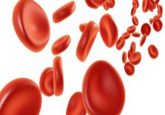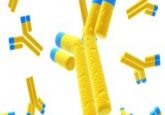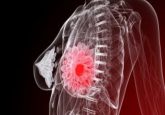Noncoding RNA highlighted for role in suppressing cancer
A noncoding RNA termed GNG12-AS1 transcribed from a region of what is often termed ‘junk’ DNA could play a role in the suppression of cancer formation, suggest the results of a new study carried out by the Universities of Bath and Cambridge (both UK). Details of their findings appeared today in Nature Communications.
Although the human genome contains approximately 3 meters of DNA, only 2 % of this is known to code for proteins. Since the sequencing of the human genome, it has been demonstrated that a notable proportion of this noncoding DNA is transcribed into noncoding RNA, yet it is unclear whether noncoding RNA actually has a function within the cell.
The team demonstrated that GNG12-AS1 works to prevent continuous growth of tumor cells and suppresses metastatic processes. Lovorka Stojic of the Cancer Research UK Cambridge Institute identified that GNG12-AS1 helps to maintain healthy cell growth by regulating levels of a tumor suppressor gene termed DIRAS3, and by suppressing a network of genes that prepare cells to change their shape and prepare for metastasis.
The team was able to distinguish between these two mechanisms by using smaller interfering RNAs to either specifically prevent transcription of the noncoding RNA or to degrade the RNA immediately after it was made. Both approaches led to cells changing their shape and transforming into migratory cells. However, only the first approach affected DIRAS3 and the cell cycle.
The researchers believe that their findings could enable further understanding of how other noncoding RNAs function and may help to develop potential gene therapies for the treatment of cancer.
Kat Arney of Cancer Research UK commented: “Only a tiny fraction of our DNA contains actual genes, and we know that at least some of the bits in between – often dismissed as ‘junk’ – play important roles in controlling how genes get switched on and off at the right time and in the right place. Research like this is helping is to unpick the precise details about how these regions work, shedding light on their potential role in the development of cancer and pointing towards new approaches for tackling the disease.”
Source: University of Bath press release





